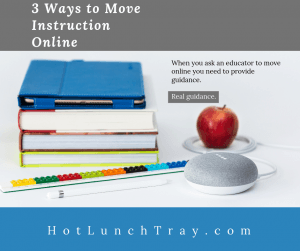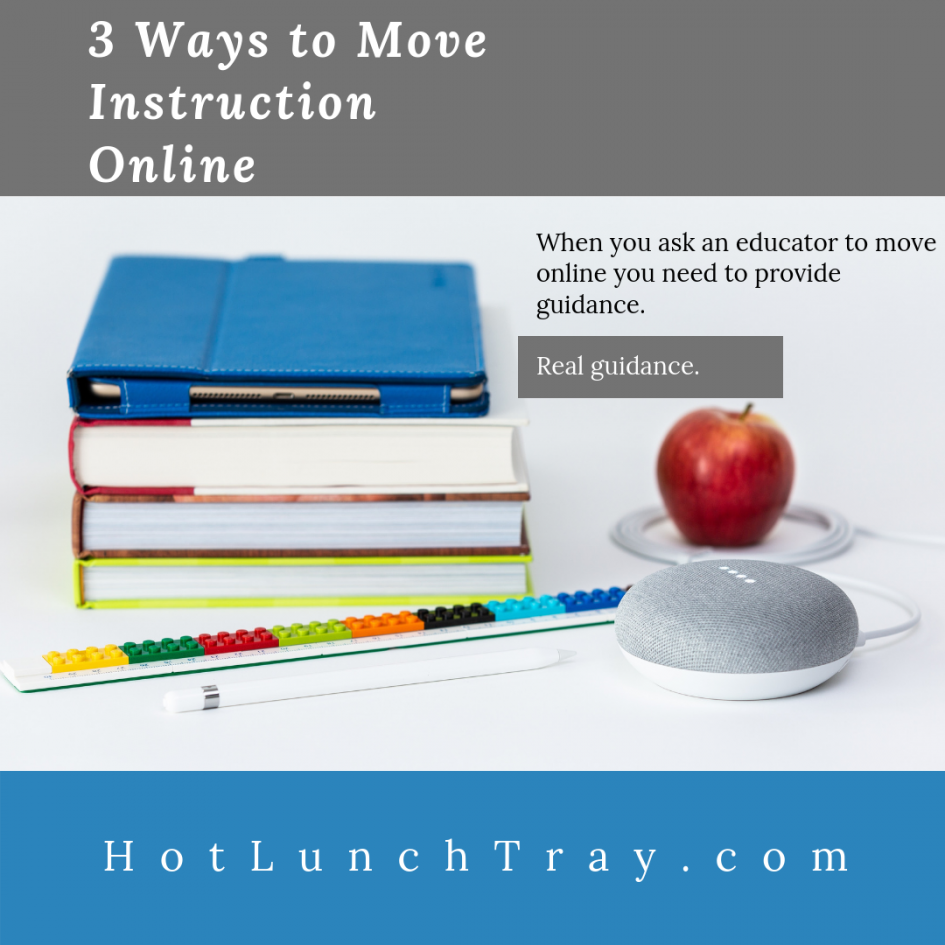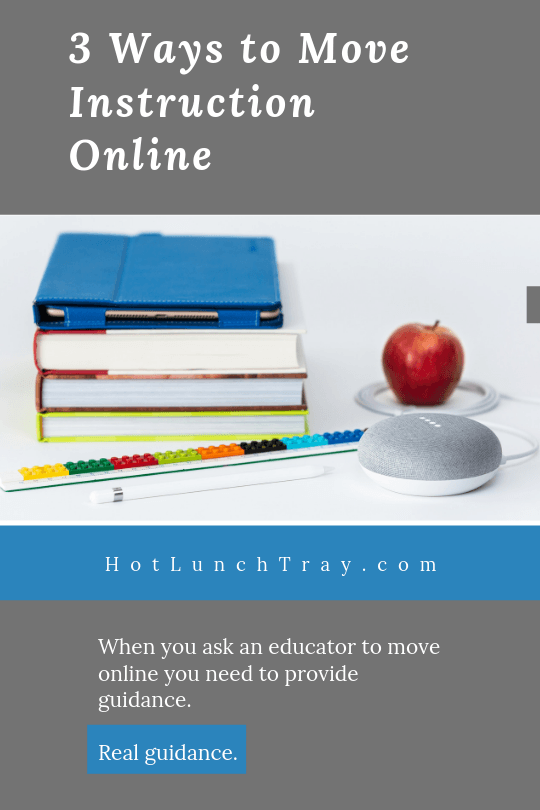When face-to-face educators try to imagine online education they are immediately challenged. Face-to-face educators major in compliance and attendance. When planning lessons they structure based on the amount of time budgeted to teaching a concept. They fit assessments into semesters, or 9-weeks, or the dinosaur unit, but rarely to mastery of a concept, mostly to the culmination of a grade on a report card.
So when you ask an educator to move online you need to provide guidance. Real guidance.
The first place to start is to examine the structure of their classroom. Is the teacher still constrained by the same environment as the face-to-face scenario? If so it would be easy to try to replicate the face-to-face experience online. In fact, unless someone instructs the teacher how not to do so – it may even be expected.
Maybe face-to-face teachers need help on what a blended learning classroom is {future blog post idea?}, maybe face-to-face teachers transitioning to an online experience needs training. But the one thing we know for sure, without guidance we can expect failure.
If online content is part of the overall class, the organization of the content and workflow also need consideration.

The second place to start is to identify how the timeline shifts. Mostly in face-to-face, the timeline for learning is lesson/plan book-based. If the teacher is able to flex students work times to include outside of the classroom and work within a range instead of starting and stopping in unison.
To shift time acknowledges that some students are ahead/some students are behind grade level. To shift time also concedes that each student may take a differing amount of time to learn something, anything, everything. Learning moves into a more reciprocal teaching pattern at the small group/individual level. It is as if there are as many rounds of learning going on in a classroom as levels of learners.
Curate local, current lesson plans which reflect this trend. Workshop some exemplary lesson plans with teachers on-site.
The third place to start is with content. Created or repurposed, content is where students can spend an increased amount of time. So it is worth examining.
This is also where teachers potentially lose momentum. To create or to repurpose course content?
While a goal may be to have all original content, it is more important to start than to wait until all the content is created or customized. After all, in a blended classroom, the teacher can mitigate less-than-perfect content face-to-face.
Consider what a good chunk of online content is. HINT: It is NOT a video of you doing …. the exact same thing you do in a face-to-face environment. A chunk of content could be a reading passage, a structured discussion board, an online activity with a culminating face-to-face activity. A chunk of content is not a recreation of sitting in a lecture all of the class period. Ideally, and to support predictability and structure in the class include the same items in each unit as available online. Perhaps all presentations, notes, and study guides?
If you provide guidance in the areas to address when moving an educator online, be prepared to immediately collect feedback on which of the three ways they need support. How have you successfully moved online and what support did you need/receive?







2019-02-10 at 6:23 pm
These are great tips for online teachers to use. I am not a teacher but these ideas are very useful in other professions too.
2019-02-10 at 7:11 pm
I honestly didn’t know anything about this subject at all. Very interesting to read and learn.
2019-02-11 at 6:46 am
WOW – great info here. Perhaps one day I’ll need this if we decide to homeschool our son because of moving to the mountain. YOu never know!
2019-02-11 at 9:31 am
My oldest has recently begun tutoring (both in home and now on-line) – these ideas are super helpful and definitely need to be considered. It’s a whole different experience with it’s own set of challenges –
2019-02-11 at 9:36 am
I have some friends who teach college courses from their home offices. They were hesitant at first but have told me once you get used to the video conferencing software it really can be a good experience.
2019-02-11 at 10:20 am
I can easily see how moving from a traditional classroom to online instruction may be difficult. I’m sure once an educator adapts from the transition, things will calm down.
2019-02-11 at 1:26 pm
If I was still Homeschooling Full Time I would look for a online school for my son so I could attend college classes alongside my son.
2019-02-12 at 4:28 pm
You’ve provided some great tips for educators here. My daughter will be taking an online ICT class next year and sometimes I worry that she won’t be able to keep up with it being nothing like a physical lesson in an actual classroom.
Louise x